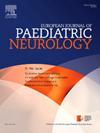轻度创伤性脑损伤后学龄儿童和青少年的认知表现和感知损伤症状。一项长期随访研究
IF 2.3
3区 医学
Q3 CLINICAL NEUROLOGY
引用次数: 0
摘要
背景:轻度创伤性脑损伤(mTBIs)在儿童和青少年中很常见,但其长期影响尚不清楚。目的检查学龄儿童和青少年在mTBI后平均6年的认知表现和感知损伤症状,并评估随访期间表现和症状的纵向变化。材料和方法选取2010-2016年期间在图尔库大学医院接受mTBI治疗的7-15岁芬兰儿童,并进行与该事件相关的脑成像和神经心理学评估。我们收集了损伤后1-3个月的认知表现和损伤症状数据,回顾性地从医院患者记录中收集。在随访时,采用适合年龄版本的韦氏智力量表、康纳斯连续表现测试II、PedsQL™多维疲劳量表和半结构化症状访谈作为结果测量。结果受试者经年龄调整后的言语表现得分在随访过程中呈下降趋势,且与受伤年龄较小、性别为男性、原始评估时言语表现得分较低有关。在随访中,64.9%报告了一种或多种损伤症状,48.6%在最初评估时表现出症状的患者在随访中继续报告症状。最持久的损伤症状是言语困难、头痛和疲劳。结论:研究结果强调了识别和监测住院治疗mTBI后恢复缓慢的儿童的重要性,因为他们出现长期问题的风险可能会增加。本文章由计算机程序翻译,如有差异,请以英文原文为准。
Cognitive performance and perceived injury symptoms in school-aged children and adolescents after mild traumatic brain injury. A long-term follow-up study
Background
Mild traumatic brain injuries (mTBIs) are common in childhood and adolescence, but their long-term effects remain poorly understood.
Objective
Examine cognitive performances and perceived injury symptoms, on average, six years after an mTBI in school-aged children and adolescents, and to evaluate longitudinal changes in performance and symptoms during the follow-up period.
Materials and method
Finnish children aged 7–15 years who were cared for mTBI at Turku University Hospital during 2010–2016, with brain imaging and neuropsychological assessment linked to the event available, were identified and targeted for follow-up assessment. We gathered cognitive performance and injury symptom data, as recorded at 1–3 months post-injury, retrospectively from the hospital patient records. Age-appropriate versions of Wechsler Intelligence Scale, Conners Continuous Performance Test II, PedsQL™ Multidimensional Fatigue Scale and semi-structured interview of symptoms were used as outcome measures at follow-up.
Results
Age-adjusted verbal performance scores of the participants deteriorated during follow-up, and were predicted by younger age at injury, male sex, and lower verbal performance scores at the original assessment. At follow-up 64.9 % reported one or more injury symptoms, with 48.6 % of those displaying symptoms at the original assessment continuing to report symptoms at follow-up. The most persistent injury symptoms were verbal difficulties, headache and fatigue.
Conclusions
The results stress the importance of identifying and monitoring children recovering slowly after a hospital-treated mTBI, as they might be at increased risk for long-lasting problems.
求助全文
通过发布文献求助,成功后即可免费获取论文全文。
去求助
来源期刊
CiteScore
6.30
自引率
3.20%
发文量
115
审稿时长
81 days
期刊介绍:
The European Journal of Paediatric Neurology is the Official Journal of the European Paediatric Neurology Society, successor to the long-established European Federation of Child Neurology Societies.
Under the guidance of a prestigious International editorial board, this multi-disciplinary journal publishes exciting clinical and experimental research in this rapidly expanding field. High quality papers written by leading experts encompass all the major diseases including epilepsy, movement disorders, neuromuscular disorders, neurodegenerative disorders and intellectual disability.
Other exciting highlights include articles on brain imaging and neonatal neurology, and the publication of regularly updated tables relating to the main groups of disorders.

 求助内容:
求助内容: 应助结果提醒方式:
应助结果提醒方式:


